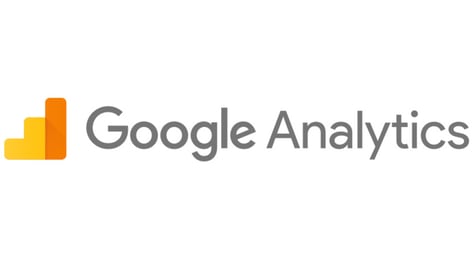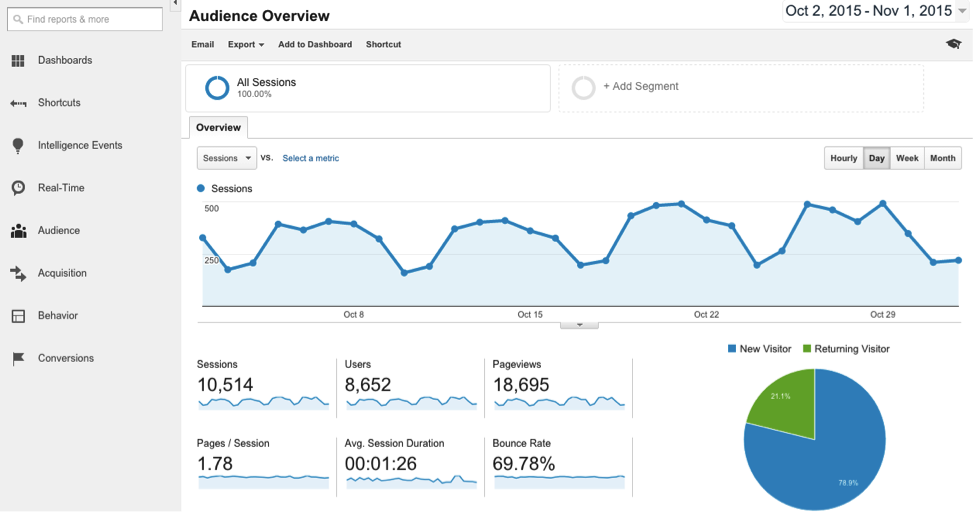 Google is more than just a search engine. It offers a plethora of services, including email (Gmail), a pay-per-click advertisement service (Google AdWords), its own version of social networks like Facebook, a platform for employees, students and others to collaborate and share documents (Google Drive), and more. Google even wants to become your internet provider (don’t believe us? Check this out). Another service Google offers is called Google Analytics. Understanding Google Analytics may seem daunting at first, but don’t worry. That’s what we’re here for.
Google is more than just a search engine. It offers a plethora of services, including email (Gmail), a pay-per-click advertisement service (Google AdWords), its own version of social networks like Facebook, a platform for employees, students and others to collaborate and share documents (Google Drive), and more. Google even wants to become your internet provider (don’t believe us? Check this out). Another service Google offers is called Google Analytics. Understanding Google Analytics may seem daunting at first, but don’t worry. That’s what we’re here for.
Put simply, the primary function of Google Analytics is to provide data from your website. Do you want to know who visits your site? How much time do they spend looking at your site? How many pages do they visit? What kind of devices are people using to access your website? Google Analytics can give you all of this information and more. The best part? It’s all free.

All of that may sound like great information to have, but it’s not useful unless you understand what it means. Here’s what we think you need to know about in order to get the most out of Google Analytics:
Sessions
- A session represents a visit to your site. A session may last anywhere from 1 second to a few hours, depending on how long a person browses your site. If a person is inactive for 30 minutes or more, their session ends. For example, let’s say Jenna goes to your website and browses for a few minutes, then gets up from her computer. If she is gone for 30 minutes or more and then returns to your site, her return will signal the beginning of a second session.
Average Session Duration
- Average session durations are just what they sound like. They answer the question: how long does each visitor typically spend looking at your website? Google calculates the total amount of time a person (let’s use Noah this time) spends on your website over a certain period of time (let’s say one month) and divides that by the number of sessions Noah had on your site.
Bounce Rate
- When a person visits your site, but only looks at one page, that is considered a bounce. The bounce rate is the percentage of bounces compared to site visits in which people look at more than one page on your website.
Goal Conversion Rate
- The Goal Conversion Rate is calculated by dividing the number of times your goal was completed by the number of times people visited your site. You can set your goal to be anything you want it to be within Google Analytics. For example, you may simply want more people to visit your website. A common goal for ecommerce sites is to have site visitors make a purchase. In that case, their Goal Conversion Rate would be calculated as follows: number of transactions divided by the total number of site visits. Read more about setting goals in Google Analytics from the masterminds themselves.
If you click on “All Web Site Data,” you will be brought to an Audience Overview Page that looks something like this (disclaimer: this is generic data we pulled from the web and does not apply to the UWW website or any of our clients’ websites):

Here, you can see a more detailed view of the sessions, bounce rate, and more. Let’s define the additional terms you see:
Users
- Users is just another term for people. The number of users indicates the number of people that have visited your site in a certain time frame (which can be customized in the top right corner).
Pageviews
- This is another fairly straightforward term. The number of pageviews refers to the number of pages that were looked at in that specific date range we talked about earlier (Oct. 2 - November 1 in this case). If a person (Anna) looks at the same page twice (in other words, if Anna goes to the homepage of your site, then checks out the “about us” page, then navigates back to the homepage), each separate viewing is counted as a pageview. So in this case, Anna’s session would result in 3 pageviews.
Pages/Session
- This metric simply indicates the average number of pages that people look at each time they visit your site.
Percent of New Sessions
- This statistic answers the question: how many of the people who visited your site have never visited before? It is difficult to be absolutely sure about this, so Google maintains that the percentage is an estimate.
As you continue in your venture of understanding Google Analytics, you will find that there is much more information to be discovered. You can never go wrong by seeking advice from the creators of Google Analytics themselves. However, if that seems a bit overwhelming to you, or if you are looking for a knowledgeable and personable internet marketing and web design team in Savannah to guide you through your website’s metrics, give United WebWorks a call. We can help you harness the power of Google Analytics and make the most out of the wonderful medium that is the internet.

